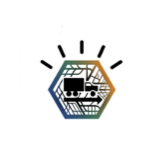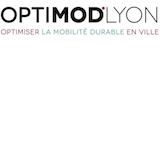quick introduction
2015 Challenges and Opportunities in HCI, Visual Analytics and Knowledge Management for the development of Sustainable Cities. Invited talk at EGC'15. Summary: Interactive Information Technologies can help managing the energy transition of cities in 3 key aspects:
- to help understand better the city's dynamics, identifiy inefficiencies and reveal optimization opportunities, where knowledge management and extraction is crucial,
- to support the city design process, notably computer supported tooling and information infrastructure that help taming the complexity of the intertwinning actors and interests at play,
- and foremost, to ease the necessary changes that will have to happen in our mobility and housing habits with novel tools and services that alleviate our energy needs.
Ville numérique: utilisation des technologies de l'information pour 1- mieux comprendre le phénomène urbain, 2- assister les processus de production de l'urbain, 3- réinventer les usages et pratiques de consommation de l'urbain pour les améliorer et en réduire les impacts négatifs.
smart deliveries

2011-... Research and development project in Urban Logistics carried with the Grand Lyon and 5 freight carriers, in the context of the Optimod Lyon project, with the support of ADEME. It aims at leveraging the city information (traffic, public works...) to improve logistic flows and optimize them. The current results are: to optimize delivery rounds, one must first have a proper method to resolve delivery locations from the text description of the round, and calibrate trips time properly, which requires tuning travel time estimation to each driver.
Once these steps have been performed, our results show the possibility of reducing travel time by 12%, distance traveled by 18%, and reduce total carbon emissions at the city scale by a few % (3600 teqCO2/y) as estimated by the Grand Lyon. In the fall of 2015, we are undertaking conducting rounds with drivers to estimate the gains in actual traffic conditions.
- SmartDeliveries - delivery rounds optimization in Lyon Video for InnovClimat, ADEME-sponsored public exhibition. French version.
- Optimizing Urban Freight Deliveries: From Designing And Testing A Prototype System To Addressing Real Life Challenges Baudel, T., Dablanc, L., Aguiar Melgarejo, P., Ashton, J., Transportation Research Procedia, Volume 12, 2016, Pages 170–180, Tenth International Conference on City Logistics 17-19 June 2015, Tenerife, Spain. local version.
- The SmartDeliveries project in Lyon: optimizing professional urban mobility leveraging ITS Baudel, T., Aguiar Melgarejo, P., Laborie, P., Ashton, J., Depetris, A. Proceedings of ITS World Congress Bordeaux.
- Global and reactive routing in urban context: first experiments / first difficulty assessment. Aguiar-Melgarejo, P. Baudel, T. & Solnon, C. in Optimization and Smart Cities Lisa Amini and Pascal Van Hentenryck Editors, CP 2012 Workshop.
- Optimisation du fret et des déplacements professionnels planifiés dans le projet Optimod’Lyon. Thomas BAUDEL IBM France Lab, Center for Advanced Studies, Penelope AGUIAR-MELGAREJO, IBM France Lab, Industry Solutions Christine SOLNON, INSA-Lyon, Laurent JACQUES, Renault Trucks, Jean COLDEFY, Grand Lyon. Revue de l'ATEC-ITS TEC 219. Sept 2013
measuring the performance of cities
2014-... Ongoing project carried in the context of the Efficacity institute. Institut pour la transition énergétique de la ville.
traffic prediction and incident detection

2011-2014 Research project carried in the context of the OptimodLyon, with Laura Wynter and Sebastien Blandin's IBM Research teams. It aims at provide reliable 1-hour ahead traffic prediction on the city of Lyon, as well as various traffic regulation tools, such as early incident detection, incident duration and duration prediction and remediation strategies.
- Traffic Estimation and Prediction for Urban Road Networks, Application to GrandLyon Wynter, L., Trager, B., Yu, Y., Karianakis, Y., Jabari, S., Coldefy, J., Marquois, D. Baudel T. Proceedings of ITS World Congress Bordeaux.
- Incident Detection and Incident-Impacted Traffic Prediction for Urban Road Networks, Application to GrandLyon Wynter, L., Blandin, S., Trager, B., Yu, Y., Karianakis, Y., Coldefy, J., Marquois, D. Baudel T. Proceedings of ITS World Congress Bordeaux.
- Prédiction du trafic et optimisation des déplacements professionnels planifiés: travaux d'IBM dans le projet Optimod. Baudel, T., Wynter, L. and Codefy, J. Congrés ATEC-ITS. 2013.